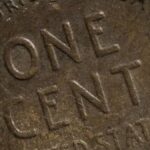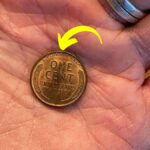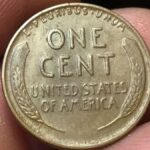The Lincoln Wheat Penny is one of the most popular coins among collectors, and some rare versions of this coin are worth a fortune. One particular Lincoln Wheat Penny has been valued at an astonishing $230,000, and the most surprising part is that it may still be in circulation. This means that an ordinary person could find this valuable coin in their pocket change. Let’s explore the history, rarity, and what makes this penny so special.
History of the Lincoln Wheat Penny
The Lincoln Wheat Penny was first introduced in 1909 by the United States Mint to honor Abraham Lincoln, the 16th President of the United States. This was the first time a U.S. coin featured a real person’s portrait instead of symbolic images. The design includes Lincoln’s profile on the front (obverse) and two wheat stalks on the back (reverse), giving it the name “Wheat Penny.” The coin was produced until 1958, after which it was replaced by the Lincoln Memorial Penny.
What Makes This Penny So Valuable?
Not all Lincoln Wheat Pennies are worth a lot of money, but some rare variations can be extremely valuable. The $230,000 Lincoln Wheat Penny is valuable due to its rarity, minting errors, and historical significance. Here are some key reasons why this coin is so special:
- Rare Minting Errors – Some Lincoln Wheat Pennies were mistakenly struck using the wrong metal composition, making them incredibly rare.
- Low Mintage – Certain years had limited production, making these pennies difficult to find.
- Special Mint Marks – Some pennies were minted at specific locations like Denver or San Francisco, and their unique markings increase their value.
- High-Quality Condition – A well-preserved coin in mint condition can be worth more than a worn-out one.
The 1943 Bronze Lincoln Penny – A Millionaire’s Dream
One of the most famous and valuable Lincoln Wheat Pennies is the 1943 Bronze Penny. In 1943, during World War II, pennies were supposed to be made of steel to save copper for the war effort. However, a small number of bronze (copper) pennies were accidentally minted, making them extremely rare. If you find a 1943 Lincoln Penny that sticks to a magnet, it is made of steel and not valuable. But if it does not stick to a magnet, it could be one of the rare bronze versions worth over $230,000.
Still in Circulation – Could You Find One?
Many people assume that all rare coins have already been collected, but some valuable Wheat Pennies are still in circulation. Since pennies are often ignored or left in jars, rare ones can go unnoticed for decades. Checking your spare change, old piggy banks, or inherited coin collections could lead to an exciting discovery.
How to Identify a Valuable Lincoln Wheat Penny
If you want to check whether your Lincoln Wheat Penny is valuable, follow these steps:
- Check the Year – Look for 1909-S VDB, 1914-D, 1922 No D, and 1943 Bronze pennies, as these are among the rarest.
- Look for Mint Marks – The letters “D” (Denver) or “S” (San Francisco) under the year indicate a mint location. Some specific marks increase the value.
- Test with a Magnet – If you find a 1943 penny that is not attracted to a magnet, it could be a rare bronze version worth thousands of dollars.
- Check the Condition – A coin in better condition (shiny, less worn) is more valuable than one that is scratched or damaged.
Conclusion
The Lincoln Wheat Penny is a fascinating piece of American history, and some versions are worth a fortune. The $230,000 Lincoln Wheat Penny is proof that rare coins can still be found in everyday change. Whether you are a collector or just curious, taking a closer look at your pocket change could lead to an incredible discovery. Who knows? The next valuable penny might be hiding in your wallet right now!
Disclaimer: The prices mentioned for rare coins, including the Lincoln Wheat Penny, are not guaranteed and may not be entirely accurate due to market fluctuations and varying appraisals.
Disclaimer: This article is written for informational purposes only. We do not guarantee its completeness or accuracy, please confirm with official sources.



